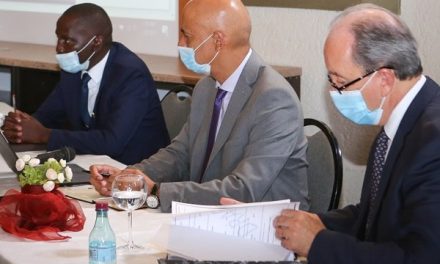
Broadcasting Code deters investment
Responding to the draft Broadcast Code of Conduct, MultiChoice Namibia this week stated that it views the proposed code as deterring investment.
Earlier this week the Communications Regulatory Authority of Namibia (CRAN) introduced the draft Broadcast Code of Conduct for broadcasting licensees at a public forum where MultiChoice Namibia participated, submitting its comments in the form of a presentation.
According to the MultiChoice Namibia’s legal representative, Wendy Rosenberg, in their current format the regulations are not conducive to investment in the digital multi-channel broadcasting industry.
Current legislation for multiple mobile and online platforms emerging in the digital multi-channel broadcasting space will not be able to seek investment due to the draft Code of Conduct for Broadcasting Licensees, she argued.
Broadcasters are currently competing for audiences and advertising. Should the unregulated platforms receive a favourable Code of Conduct based on their nature, mandate and source of funding, it will cramp the strategic potential for growth of the existing three broadcasters, NBC, MultiChoice and One Africa. In essence, the draft Code of Conduct will give new entrants an unfair advantage while it will restrict the operations of the existing broadcasters.
While not against new players, MultiChoice’s point of view is that competition must be fair and not give digital broadcasters who make their services available through internet channels, the advantage of offering content without the accompanying investment in infrastructure and technology.
“Content is subscriber-driven, not regulation-driven as subscribers choose to subscribe to pay TV services.” Rosenberg said.
MultiChoice Namibia said in their presentation that Investment in the Digital multi—channel environment and changes in the subscription broadcasting environment lead to MultiChoice’s business model being unworkable for multi-channel pay TV which also has specific implications for the final Broadcasting Code.
Taking from the Independent Communications Authority of South Africa (ICASA), an independent regulatory body of the South African government. Rosenberg notes how their regulations show support for a more relaxed regulatory approach to subscription broadcasting services.
CEO of CRAN, Festus Mbandeka said at the event that after careful consideration, CRAN decided on the draft code. “We found the current self-regulation efforts not being sufficient in the scope and applicability to satisfy the objects of section 89 of the Communications Act.”
Mbandeka added that the broadcasting code applies to all media houses that will produce and air audio and or visual media for broadcast to the general Namibian public.
The changes in the broadcasting code are necessitated by the the traditional broadcasters moving over to multiple, mobile and online platforms that emerged for the creation and distribution of content that is increasingly being viewed online. Viewers select and view content of their choice at the time of their choice.
With 113 audiovisual channels and 77 audio channels available in Namibia with specialist language bouquets that cater for different ages, genders, races, income groups and lifestyles, the need for local content as set out in CRAN’s draft code makes it not commercially viable as it is too costly to localise content for one market , especially a small market such as Namibia, according to Mbandeka.
“Channels need to appeal to a broad subscriber base in order to recoup costs” Rosenberg said, adding that the draft broadcasting code is generally appropriate for a single channel broadcaster who creates content which MutliChoice does not.










































